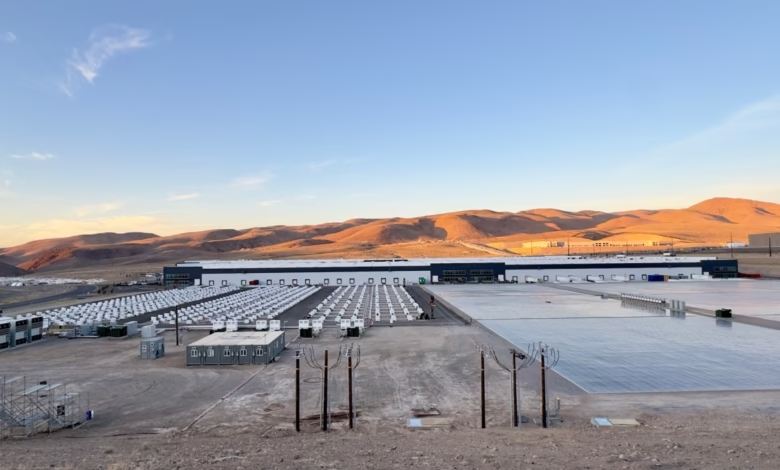Redwood Materials Targets AI Data Centers With New Energy Storage Venture

▼ Summary
– Redwood Materials has launched Redwood Energy, a new energy storage business using retired EV batteries to power AI data centers, starting with a 12 MW microgrid for Crusoe.
– The company has stockpiled over 1 gigawatt-hour of used EV batteries and plans to deploy 20 gigawatt-hours of grid-scale storage by 2028.
– Redwood Materials, founded by former Tesla CTO JB Straubel, originally focused on battery recycling but has expanded into cathode production and energy storage.
– The new energy storage model is economically viable and carbon-free, addressing a long-standing challenge in repurposing EV batteries for grid-scale use.
– Redwood’s move into repurposing batteries is strategic, as the anticipated wave of retired EV batteries has been slower to materialize than expected.
Nestled in the Nevada desert, rows of retired EV batteries sit quietly beneath white coverings, an unassuming sight masking a groundbreaking energy solution. This collection forms North America’s largest microgrid, powering a 2,000-GPU modular data center for AI infrastructure leader Crusoe. Behind this innovation is Redwood Materials, the battery recycling giant led by Tesla co-founder JB Straubel, now venturing into energy storage with a bold new initiative.
Redwood Materials recently unveiled Redwood Energy, a business arm repurposing thousands of EV batteries to deliver clean power, starting with AI data centers. Partnering with Crusoe, the company has deployed a 12 MW solar-powered system with 63 MWh of storage capacity, fueling Crusoe’s modular data operations. This isn’t just a pilot project, it’s a profitable, revenue-generating operation, with plans to scale rapidly.
The numbers behind Redwood’s battery stockpile are staggering. The company already holds over 1 gigawatt-hour of retired EV batteries, with another 4 gigawatt-hours expected soon. By 2028, it aims to deploy 20 gigawatt-hours of grid-scale storage, positioning itself as the largest repurposer of used EV battery packs.
Straubel’s confidence was palpable at the launch event, where every detail, from lighting to catering, ran on the microgrid. “We wanted to go all in,” he said, emphasizing that this venture could outpace Redwood’s core recycling business in growth.
Founded in 2017, Redwood Materials began by recycling battery scrap and consumer electronics, extracting critical minerals like cobalt and lithium for reuse. The company has since expanded into cathode production, generating $200 million in revenue last year. Its partnerships with Toyota, Panasonic, and GM, along with a new South Carolina facility, signal its rising influence in the battery supply chain.
Redwood Energy marks a strategic pivot. Unlike off-grid systems, its storage solutions can integrate with renewable sources or the grid itself. “There’s no green intent required here,” noted CTO Colin Campbell. “It’s a good economic choice that also happens to be carbon-free.”
The move addresses a long-standing industry challenge: scaling grid storage with repurposed EV batteries. While others have struggled to deliver, Redwood’s recycling expertise gives it a unique edge. Jessica Dunn, a battery expert at the Union of Concerned Scientists, sees this as a turning point: “It shows where the end-of-life market is headed.”
For Redwood, repurposing isn’t just an opportunity, it’s a necessity. With the anticipated wave of retired EV batteries delayed, the company can’t rely solely on recycling. “If Redwood didn’t enter this market, they’d miss years of revenue,” Dunn explained. Straubel acknowledges the timing challenge, admitting Redwood launched “almost too early” by focusing initially on smaller battery streams.
Today, Redwood processes 20 gigawatt-hours annually, but with 350 gigawatt-hours already in EVs and 150 gigawatt-hours added yearly, the potential is vast. Its Nevada campus and upcoming South Carolina facility will bolster production, aiming for 100 gigawatt-hours of cathode and anode materials by year’s end and 500 gigawatt-hours by 2030.
This venture isn’t just about profit, it’s about redefining energy storage. By giving retired batteries a second life, Redwood is bridging the gap between sustainability and scalability, proving that the future of power lies in reinvention.
(Source: TechCrunch)
